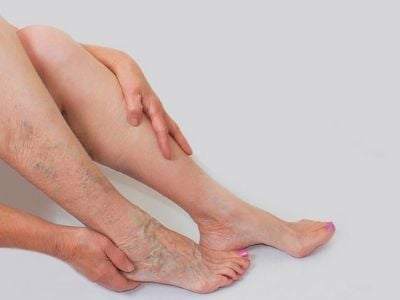This is an automatically translated article.
Aerobic exercises every day help regulate the heart. According to the recommendations of the American Heart Association, each person should do aerobic exercise with warm-up, cool-down and stretching exercises for at least 30 minutes/day, 5-7 days/week to improve cardiovascular health.
1. Benefits of aerobic exercise every day
Aerobic exercise helps to regulate the heart. This is a form of exercise that regulates breathing, controlling the amount of oxygen going to the muscles of the body. Accordingly, the benefits of aerobic exercise are:
Improve cardiovascular health; Reduce the risk of heart disease; Hypotension; Increases HDL - a type of good cholesterol; Helps to control blood sugar well; Helps to lose weight or gain weight as needed; Improve lung function; Lowers resting heart rate. Modes of light-intensity aerobic exercise include: Swimming, cycling, using a treadmill, walking, rowing, etc. More intense forms of aerobic exercise include jogging, jumping rope, and more. , aerobic exercise has a strong impact,...
MORE: What's wrong with doing aerobic exercise after 1 month of meniscus repair?
2. How to do aerobic exercise to ensure safety?
Before starting an exercise program, each person should consult a doctor. Patients with diabetes, heart disease, high blood pressure, arthritis, lung disease, or other health conditions may need additional safety instructions when doing aerobic exercise.
In case of occurrence of symptoms during exercise such as abnormal shortness of breath, chest pain, chest tightness, shoulder or jaw pain, dizziness, joint pain,... the practitioner should stop immediately and contact a doctor. doctor.

3. Some notes when doing aerobic exercise every day
3.1 Time to exercise The American Heart Association recommends that each person spend at least 30 minutes a day, 5-7 days a week, to exercise. The workout can be divided into 10-minute intervals. Specifically, walking 3 times / day, 10 minutes / time to reduce the risk of cardiovascular disease, diabetes, hypertension and high cholesterol. At the same time, this form of exercise also gives the same calorie-burning effect as walking for 30 minutes continuously.
Daily aerobic exercise is an appropriate choice for each person. Most athletes will not need to rest between workouts, unless they are training at a high level or have recurrent joint pain. In case of joint pain, the practitioner can choose to alternate exercises with less pain or completely stop the exercises that cause pain.
3.2 Intensity of exercise Aerobic intensity is determined by how hard the exerciser works. Practitioners should determine their goals, fitness, ... to have the appropriate intensity of exercise.
To determine the appropriate exercise intensity, the practitioner can use the RPE (rate of exertion) chart. The rating scale of the system is from 1 to 10. 1 is very light, 10 is very strenuous (maximum exercise). Level 10 is only done if closely supervised by a coach. Moderate intensity aerobic exercise is recommended, especially in the 3 - 5 range.
3.3 Heart rate and aerobic exercise Increased heart rate is directly correlated with the intensity of aerobic exercise. Physical fitness, genetics, environment, and tolerance are all factors that make the heart rate different from one person to another when performing the same exercise.
If you want to choose exercises based on your heart rate, you should consult with your doctor to determine the appropriate range of exercise. Certain medications, such as blood pressure medications, heart rate monitors, etc., can make it impossible for exercisers to determine exercise intensity in this way. In this case, it is necessary to consult a doctor for appropriate adjustment.
3.4 Warm-up and cool-down Every aerobic session includes a warm-up and cool-down. The warm-up phase should not perform stretching movements, but should gradually increase the speed and intensity of the exercise. This helps the body increase blood flow to the muscles, reducing the chance of muscle or joint injury. Warm-up should last 5 - 10 minutes. Before the end of the session, you need to cool down. Accordingly, cooling down has a similar time to start-up with a decreasing rate. Stretching exercises after aerobic exercise will be very appropriate.

Tập aerobic cần trải qua các bước quan trọng trong đó có khởi động
3.5 Workout Progression Moving to more intense exercise should be based on individual tolerance. There are 3 methods to increase the intensity of aerobic exercise: Increase speed, increase resistance and increase exercise duration. Accordingly, increasing the intensity should be done gradually, not too suddenly.
Aerobic exercise every day brings many health benefits. Trainers need to pay attention to warm up carefully, practice with an intensity suitable for their own physical strength.
Please dial HOTLINE for more information or register for an appointment HERE. Download MyVinmec app to make appointments faster and to manage your bookings easily.
Reference source: my.clevelandclinic.org












